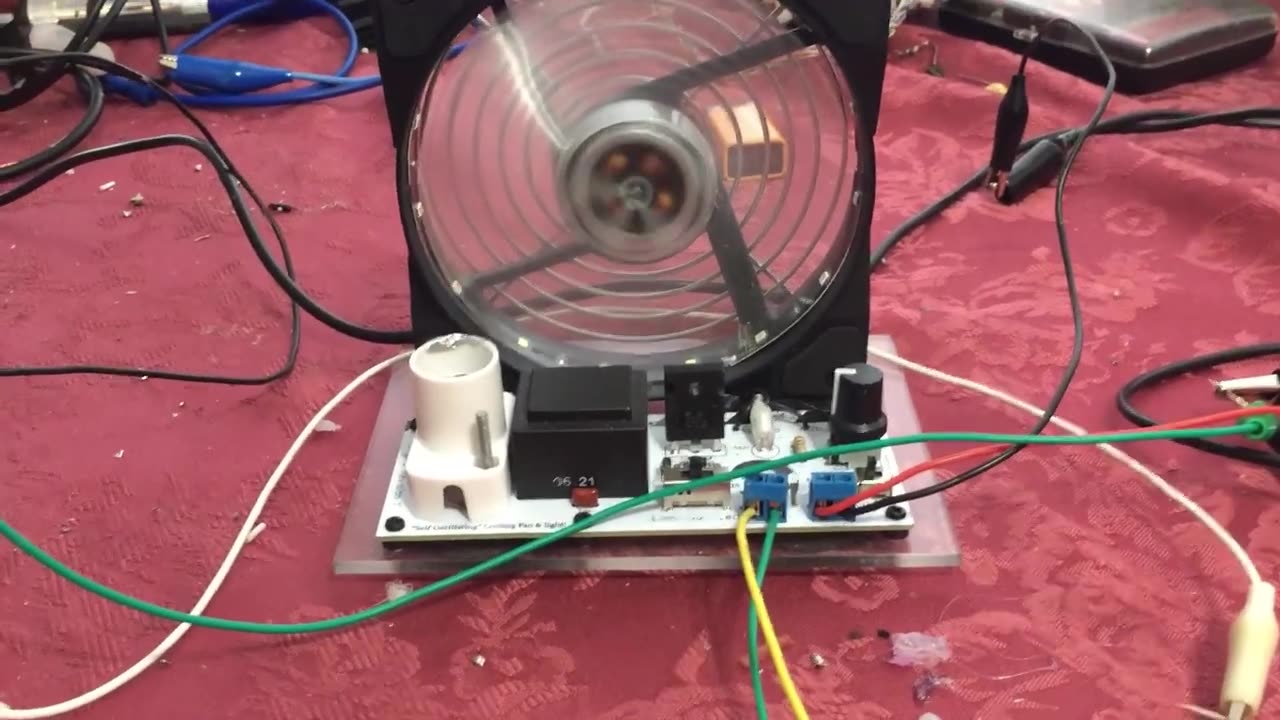Premium Only Content

One Wire Bedini
Hello, everyone! Today, I have something intriguing to share about the Bedini motor, a device well-regarded in the community for its unique way of harnessing energy. As many of you know, the Bedini motor partially relies on G-force as a trigger mechanism. It's a brilliant concept but let's remember—it's not magic. We still need to give it a little kick to get it started. Once spinning, the G-force helps us recycle energy, allowing for the continuous triggering of the motor's coil through polarity flip, leading to a small yet impactful pulse that keeps the system alive.
Many enthusiasts have observed that capturing the motor's inductive kickback—particularly with a flyback diode—enables charging of multiple batteries, but this isn't a case of 'something for nothing'. The energy must originate from somewhere. Here, John Bedini's concept of 'energy from the vacuum' could play a subtle yet pivotal role, possibly tapping into the fabric of the vacuum itself due to the interaction with the G-force.
But when it comes to charging batteries, there's no escaping the small current it takes to energize the coil. There's no such thing as a free lunch, after all. Larger Bedini motors can draw around 1.5 amps with each pulse due to this constant magnetic 'recharging'—it's akin to topping up a magnetic battery.
Now, let's consider leaving this pulse untouched, avoiding direct coupling. Looping the system as-is creates a short-circuit scenario that won't work. Yet, when we short the kickback side, the system seems to perform better, with increased speed and torque while using less energy. It's tempting to label this as over-unity, but what we're seeing is actually a state of hysteresis—this isn't 'real' power.
Nevertheless, Bedini cleverly utilized this state. By using batteries as a 'near dead short', the system operates more efficiently and can charge multiple batteries—though it still nibbles away at our input pulse.
Now, instead of closing the loop—which would negate our gains—let's follow Tom Bearden's advice and keep that loop open. By shorting the Bedini's kickback into a low impedance primary of a high voltage transformer, we're utilizing that state of hysteresis. This behaves similarly to reactive power: it triggers on the primary and enlivens our secondary.
By adopting a one-wire approach, with diodes and separate earth grounds for high voltage outputs, we can harness the pure potential differences between those grounds. This setup yields a surprising increase in voltage, all without a direct electron path from input to output.
Even under the load of charging batteries, we see significant peaks in voltage. This process is scalable, and while it could potentially self-loop, why aim for that when we can achieve much more? By not insisting on self-looping just for the sake of it, we can focus on efficiency—this modification alone can boost a Bedini motor's efficiency to about 75%.
So why not upgrade our Bedini motors this way? It's not just smart—it's revolutionary. Thank you for watching, and let's keep pushing the boundaries of what's possible.
Forum http://typeright.social/forum
Please Help Support My Research: https://youtu.be/pYXETBB40j0
-
 17:59
17:59
Joel Lagace
1 year ago $0.14 earnedModern Moray Generator
3615 -
 7:30:25
7:30:25
SpartakusLIVE
8 hours agoVerdansk Duos w/ Nicky || Saturday Spartoons - Variety Later?!
44.3K -
 1:38:47
1:38:47
Badlands Media
22 hours agoDevolution Power Hour Ep. 387
59.9K13 -
 1:05:23
1:05:23
Man in America
12 hours agoSoaring Gold Exposes the Imminent Crash of the Old System w/ John Perez
30.8K5 -
 2:42:40
2:42:40
TruthStream with Joe and Scott
12 hours agoTHOMAS AND GROK: AI, Bible decodes, The JESUS Cube live 9/6 #487
12.2K -
 LIVE
LIVE
BlackDiamondGunsandGear
6 hours agoGet Prepped / After Hours Armory / LIVE SHOW /
98 watching -
 2:01:39
2:01:39
Tundra Tactical
5 hours ago $2.93 earned🛑LIVE NOW!! This spits in the face of the Second Amendment.🛑
15.8K -
 DVR
DVR
DLDAfterDark
4 hours ago $0.62 earnedIt's SHTF! Do You Have What You Need?? Let's Review Items & Priorities
10.5K4 -
 28:58
28:58
Stephen Gardner
5 hours ago🚨Explosive allegations: Rosie O’Donnell connects Trump to Epstein scandal!?
20K49 -
 LIVE
LIVE
SavageJayGatsby
2 days agoSpicy Saturday | Let's Play: Grounded
430 watching